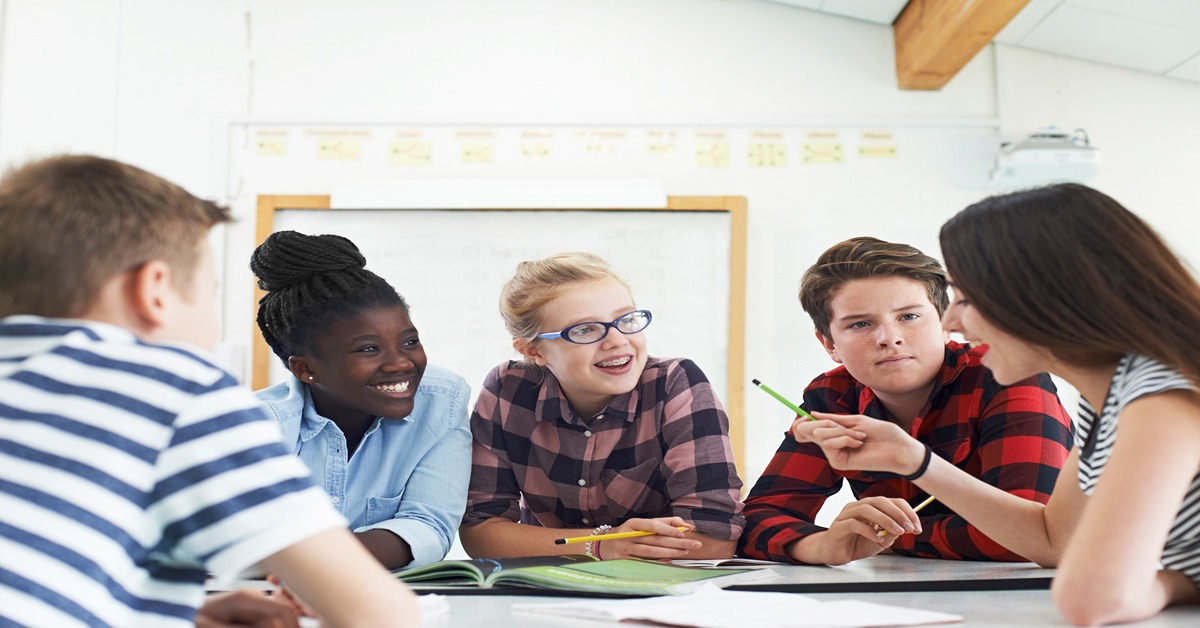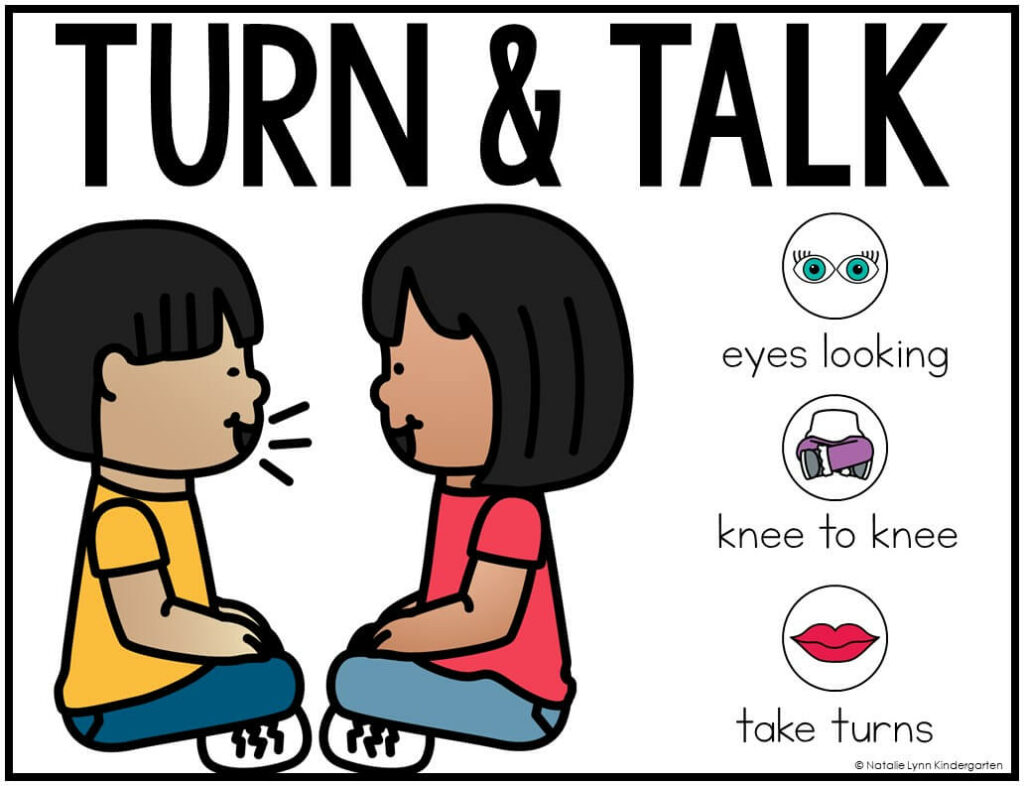
What is turn and talk? Best tips for you
Turn and talk is a simple yet powerful instructional strategy that can transform your classroom into a dynamic and engaging learning environment. By encouraging students to discuss ideas with a partner, you can foster critical thinking, improve communication skills, and enhance overall learning outcomes.

Turn and Talk: A Deeper Dive
Turn and talk is a simple yet powerful instructional strategy that empowers students to actively engage with the content and each other. It involves a quick, structured discussion between two or more students about a specific topic or question.
Key Components of Turn and Talk:
Clear Prompt or Question:
- The teacher poses a focused question or prompt that encourages critical thinking and discussion.
- The prompt should be relevant to the lesson and challenging enough to stimulate conversation.
Partnering in turn and talk:
- Students are paired up, either randomly or strategically.
- The teacher can use various pairing strategies, such as:
- Shoulder Partners: Students pair with the person sitting next to them.
- Face-to-Face Partners: Students pair with someone facing them across the room or table.
- Random Pairing: Students draw names from a hat or use a random number generator.
Discussion Time for turn and talk:
- The teacher sets a specific time limit for the discussion, usually 30 seconds to 2 minutes.
- A timer can be used to help students stay focused and on track.
Sharing Out:
- After the discussion, the teacher selects a few pairs to share their insights with the class.
- This allows the teacher to assess student understanding and address any misconceptions.

Benefits of Turn and Talk
Turn and talk is a simple yet powerful instructional strategy that offers numerous benefits for both students and teachers. Here’s a detailed look at the advantages of this technique:
Enhanced Student Engagement
- Active Participation: Turn and talk encourages all students to participate in the learning process, rather than just a few who volunteer.
- Focus and Attention: By providing a specific task and time limit, turn and talk helps students stay focused on the topic at hand.
- Reduced Anxiety: The low-stakes nature of partner discussions can help alleviate anxiety for students who may be hesitant to share their thoughts in a larger group setting.
Improved Learning Outcomes with turn and talk
- Deeper Understanding: Engaging in dialogue with a peer can help students solidify their understanding of concepts by explaining them in their own words.
- Critical Thinking: Turn and talk prompts students to analyze information, form opinions, and evaluate different perspectives.
- Problem-Solving Skills: Partner discussions can provide a space for students to collaborate and brainstorm solutions to problems.
- Vocabulary Development: Students can practice using new vocabulary words in context and learn from each other’s word choices.
Enhanced Social and Emotional Skills
- Communication Skills: Turn and talk provides opportunities for students to practice effective communication, including active listening, speaking clearly, and responding thoughtfully.
- Collaboration: By working with a partner, students learn to cooperate, share ideas, and compromise.
- Empathy and Perspective-Taking: Listening to a partner’s viewpoint can help students develop empathy and understand different perspectives.
- Self-Confidence: Participating in discussions can boost students’ self-confidence and self-esteem.
Benefits for Teachers
- Formative Assessment: Turn and talk allows teachers to quickly assess students’ understanding of the material and identify any misconceptions.
- Differentiation: By pairing students strategically, teachers can provide support and challenge to students at different levels.
- Classroom Management: Turn and talk can be used to manage transitions and keep students engaged during independent work time.
- Positive Learning Environment: It fosters a collaborative and supportive classroom culture where students feel safe to share their ideas.
By incorporating turn and talk into your lessons, you can create a more dynamic and effective learning environment for your students.
Tips for Effective Turn and Talk

Turn and Talk is a simple yet powerful strategy to engage students in learning. Here are some tips to maximize its effectiveness:
Crafting Effective Prompts
- Clear and Concise: Ensure your prompts are easy to understand and focused.
- Open-Ended: Encourage deeper thinking by asking “how” and “why” questions.
- Relevant: Connect the prompts to the current lesson or topic.
- Challenging: Push students to think critically and creatively.
Partnering Strategies
- Random Pairing: Use a random name generator or draw names from a hat to promote diversity and prevent cliques.
- Strategic Pairing: Pair students with different strengths and weaknesses to foster collaboration and learning.
- Fixed Pairs: Assign specific partners for longer-term projects or to build strong relationships.
Setting Expectations for turn and talk
- Time Limits: Establish clear time limits to keep discussions focused and efficient.
- Active Listening: Emphasize the importance of listening attentively to partners.
- Respectful Dialogue: Encourage students to share their ideas respectfully and avoid interrupting.
- Sharing Out: Explain how selected pairs will share their thoughts with the class.
Monitoring and Supporting
- Circulate the Room: Walk around the classroom to observe and listen to student discussions.
- Offer Support: Provide guidance and encouragement to struggling students.
- Redirect Off-Topic Conversations: Gently redirect students who are not staying on topic.
Debriefing for turn and talk
- Share Key Points: Summarize the main ideas that emerged from the discussions.
- Address Misconceptions: Clarify any misunderstandings or incorrect information.
- Connect to the Lesson: Relate the discussion to the larger learning objectives.
By following these tips, you can make Turn and Talk a valuable tool in your classroom to enhance student engagement, critical thinking, and collaboration.
Example of Turn and Talk:
Subject: History Topic: The American Revolution
Teacher’s Prompt: “We’ve just learned about the Boston Tea Party. Turn to your partner and discuss why you think this event was a significant turning point in the American Revolution.”
A student Discussion (Possible Dialogue):
- Student 1: “I think the Boston Tea Party was a big deal because it showed the colonists were really angry at the British.”
- Student 2: “Yeah, and it was a symbolic act of defiance. They weren’t just complaining, they were taking action.”
- Student 1: “Exactly! It also united the colonists and made them realize they needed to fight for their independence.”
Teacher’s Follow-up:
- “Great points, everyone! Let’s bring the whole class together. Who can share what their partner said about the significance of the Boston Tea Party?”
See also:
